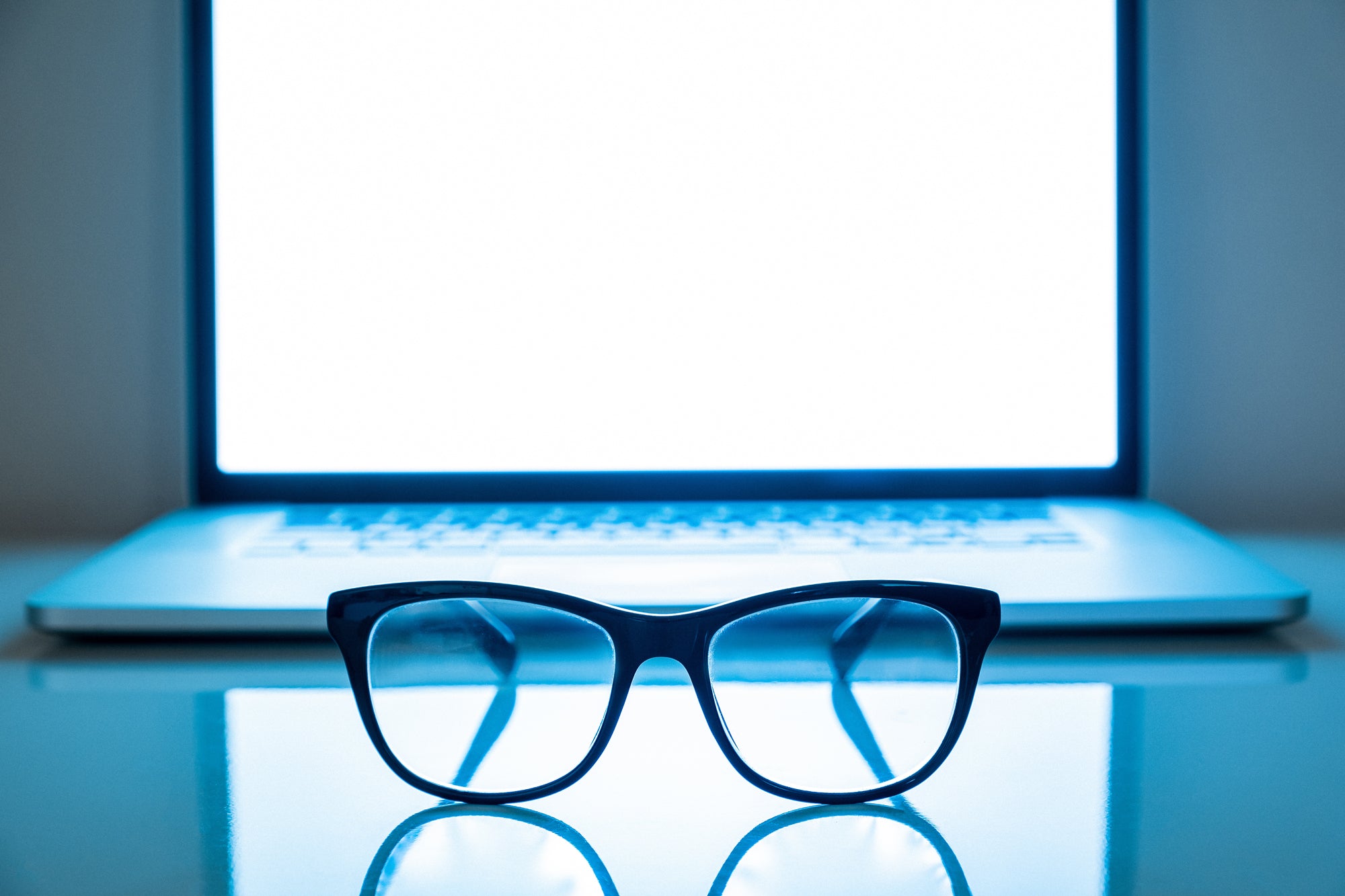
What Is Blue Light? The Truth Behind Our Screens
Blue light is a hot topic in today’s digital world. While we hear most people talk about it in relation to sitting at a computer all day, the truth is that the most common source of blue light comes from the sun.
Blue light is all around us. From computer screens, phones, and digital devices, to fluorescent and LED lighting, it’s hard to escape the effects of blue light. And while the sun may be the most significant and most potent emitter of blue light, digital devices can be more detrimental to our eye health in the long run.
Let’s dive deeper into this topic to learn more about what blue light is and how to treat it.
What is blue light?
When eye doctors talk about blue light, we are talking about the wavelength of light that makes the color blue in a rainbow. Not all colors have the same effect on our eyes and our health.
Think of it like a rainbow, or ROYGBIV: ROYG (red, orange, yellow, green) is all visible light we see, BI (blue, indigo, violet) is blue light, and past all of that is ultraviolet or invisible radiation. In general, colors at the front of the spectrum (ROYG) have longer wavelengths, which means less energy. Those closer to the end, including blue light and UV light, have short wavelengths and more energy.
The blue light wavelength is the wavelength that goes through the front parts of our eyes and gets to the back of our eyes, making us feel tired, overworked, and strained.
What does blue light do to your eyes?
Most people ask us, “why is blue light bad?” The truth is, blue light is both good and bad for our health. Just like sunlight can provide Vitamin D, but also sunburn, blue light also offers similar benefits and drawbacks.
Here are the three main ways that blue light impacts our eyes and brains.
Impacts our mood
Just like sunlight, blue light can positively impact our mood during the day. These blue wavelengths enhance our memory, attention span, and cognitive abilities. Some doctors even prescribe light therapy, which utilizes HEV blue light rays, to help treat issues like season affective disorder.
Impacts our sleep
Science shows that blue light is helpful during the day in moderation, but too much of it at night can disrupt our natural circadian rhythms. When we are exposed to the blue wavelength light, our brain thinks it is being exposed to sunlight. This can mess up our sleep patterns. If you are exposing your eyes to blue light when you lay in bed, you may have a difficult time falling asleep.
Impacts our eye health
The blue light that enters our eyes can also have an impact on the health of our photoreceptors. Protecting these photoreceptors helps prevent their age-related macular degeneration. Those of us who use our computers for many hours a day can also experience tired and fatigued eyes from light exposure.
How to treat digital eye strain
Protecting our eyes from the cumulative effects of blue light can make our eyes feel more comfortable and stay healthier. Most doctors offer protection through blue light glasses or filters designed to help combat the adverse effects of blue light and digital eye strain. Carotenoid supplements are also a standard solution as well.
Blue light filters
A blue light filter is a downloadable application or extension for phones and computers that helps reduce the amount of blue light emitted from a screen. Using warmer colors, blue light filters can help combat digital eye strain at the moment when it would start.
These are convenient options for people who don’t want to change their daily routine or add a new accessory to their wardrobe. This can also be an excellent way to help children avoid these adverse effects without having to deal with glasses’ difficulty.
Blue light glasses
Blue light glasses are explicitly crafted to help filter blue light from digital devices. For people who already wear glasses, adding blue light blockers can help make them feel more comfortable while working at a computer for the majority of the day. For contact wearers or someone who does not need an eyeglasses prescription, a pair of computer glasses are a good solution.
There are also other types of protective coating for eyeglasses available that can help with digital eye strain as well, including anti-reflective coatings and photochromic lenses.
Carotenoid supplements
Carotenoid, a vitamin found in many green vegetables like kale and spinach, has been shown to help build pigment back up in the central area of the retina called the macula. This is the part of our eye that perceives colors and has the sharpest vision. Carotenoids help protect the many cells in the macula to keep it strong and healthy longer.
For those who don’t get enough carotenoids in their diet, carotenoid supplements can help improve visual performance and boost eye health.
Bottom line: Do blue light glasses really work?
They can help. Many of our eye problems are typically much more complicated than just digital eye strain from blue light. For example, many people who think they struggle with the harmful effects of blue light may actually have a more common problem called dry eye. This is caused by us staring at the screen for too long without blinking, which can lead to blurry vision and pain.
For this reason, a more well-rounded approach to eye protection and health may be needed for many individuals. Our team can help you figure out how to treat your eye health issues best.Contact us today for a personalized diagnosis and treatment plan!
